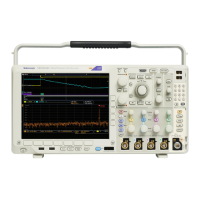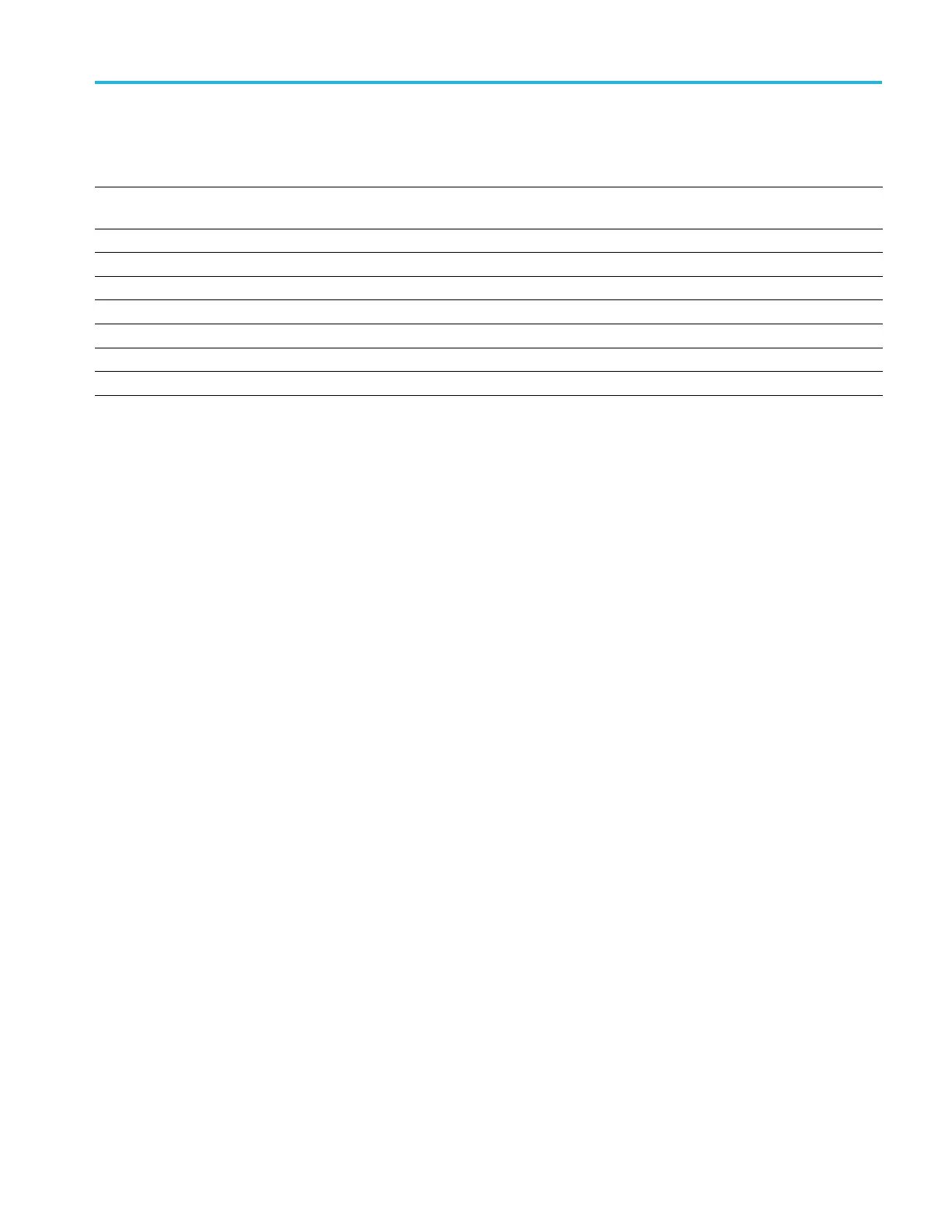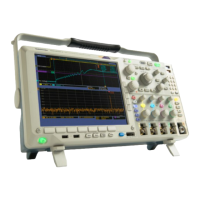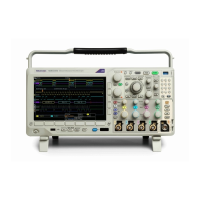Command Groups
Table 2-43: Video Picture Commands (cont.)
Command Description
VIDPic:LOCation:OFFSet Sets (or queries) the video picture line-to-line offset. This is the amount of
additional delay time to add between lines of the video picture.
VIDPic:LOCation:STARt:LINE Sets (or queries) the video picture starting line number.
VIDPic:LOCation:STARt:PIXel Sets (or queries) the video picture starting pixel in each line
VIDPic:LOCation:WIDth Sets (or queries) the video picture width, in columns.
VIDPic:LOCation:X Sets (or queries) the video picture X origin location, in columns.
VIDPic:LOCation:Y Sets (or queries) the video picture Y origin location, in rows.
VIDPic:SOUrce Sets (or queries) the channel to use for the video picture source waveform.
VIDPic:STANdard Sets (or queries) which video picture standard to use (either NTSC or PAL).
Wa veform Transfer Command Group
(See Table 2-48.)
The
CURVe and other commands and queries in the Waveform Transfer Command
Group are used to transfer waveform data points to and from the oscilloscope.
Thewaveformdatapointsareacollectionofvaluesthatrepresenttheamplitude
of the waveform samples. One data value usually represents one data point inthe
wa
veform record. Only one waveform can be transferred at a time.
Each waveform you transfer has an associated waveform preamble, which
c
ontains information such as data format, horizontal scale, vertical scale, and the
other settings in effect when the waveform was created. When you transfer a
waveform, you need to specify at least some of the general and preamble settings
(using the
DATa, WF MInpre or WFMOutpre commands) before you specify the
raw data point information (using the
CURVe command or query.)
Waveform data can be transferred to or from the oscilloscope using the Ethernet
or USBTMC interfaces in binary or ASCII format. Binary data transfer is
considerably more efficient than ASCII data transfer. Binary data is transferred to
and from the oscilloscope using the IEEE488.2 arbitrary block format (7.7.6 of
the IEEE488.2 spec) which we refer to in this document as “binary block format”.
A binary block is represented as:
#N<N-Digits><binary data>
Where:
The “#” is the arbitrary block token.
N is a single hexadecimal digit specifying how many decimal digits
immediately follow.
<N-Digits> is a decimal number N digits long, that specifies the number of
binary data bytes to follow.
MDO4000/B/C, MSO/DPO4000B and MDO3000 Series Oscilloscopes Programmer Manual 2-95

